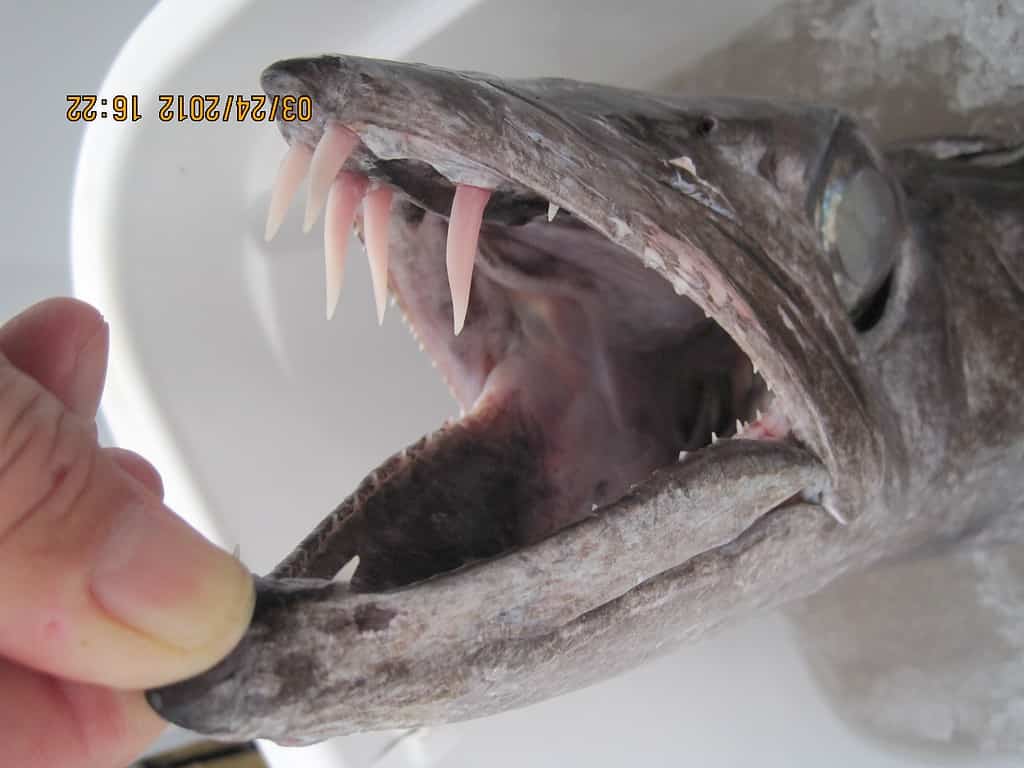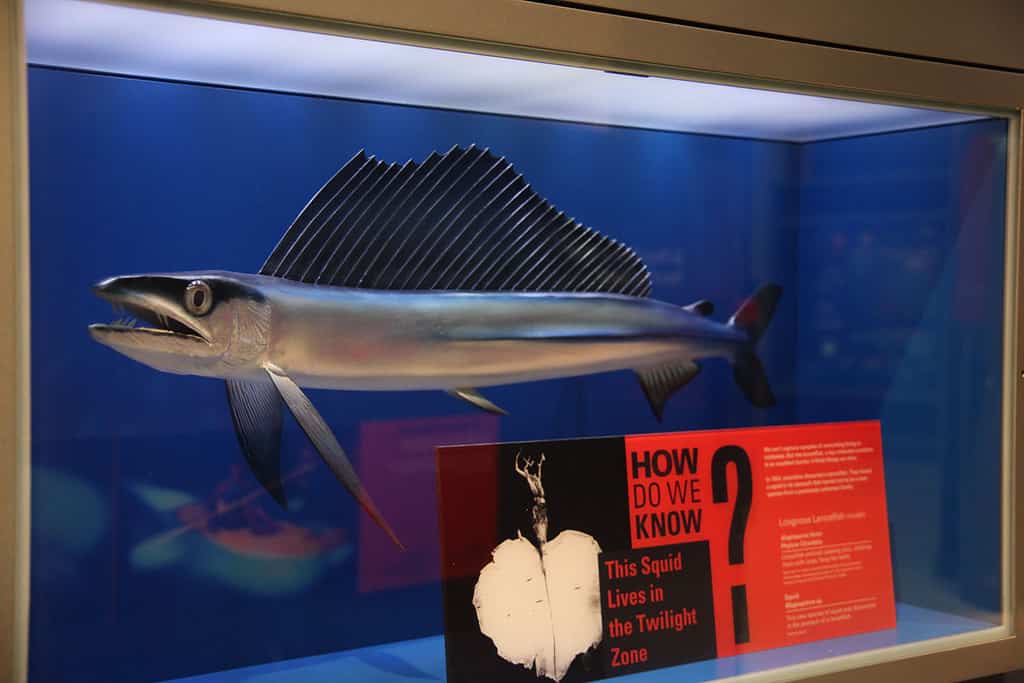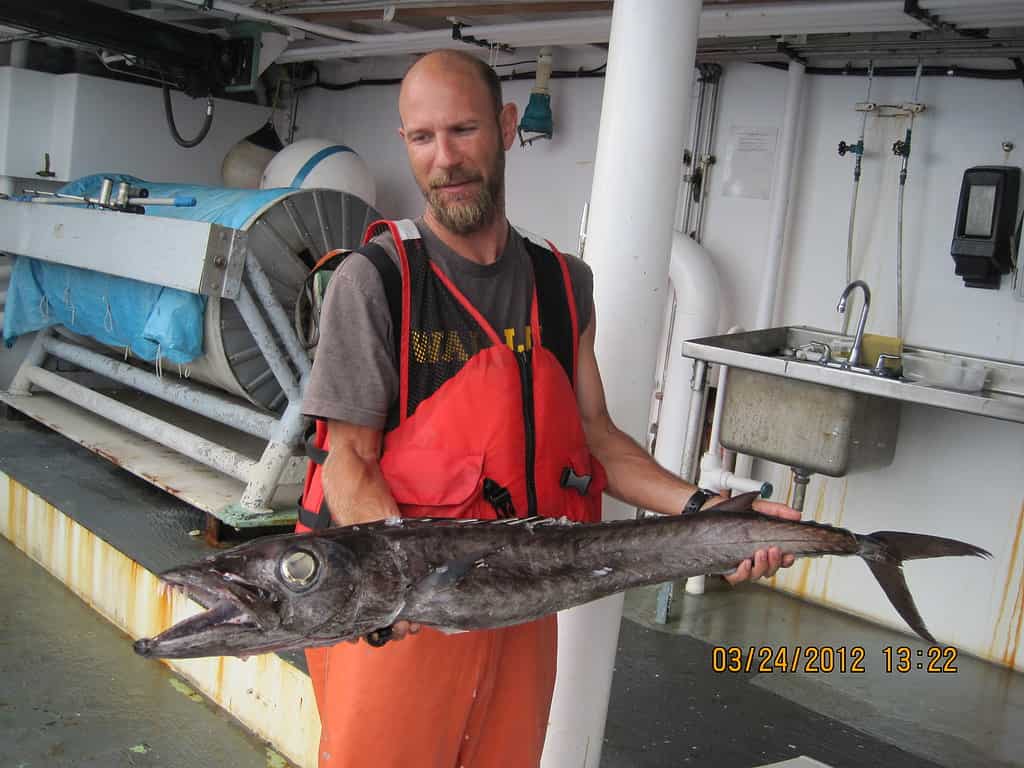Lancetfish look like something straight out of a horror movie. These deep-sea fish are very real, though, and they are currently washing up on Oregon beaches. And, disturbingly, no one knows why.

©2,046 × 1,062 pixels, file size: 1.22 MB, MIME type: image/jpeg – License
In a May 1 Facebook post, Oregon State Parks confirmed that several lancetfish had washed ashore on beaches from Nehalem to Bandon. The social media post noted, “These deep-sea fish live in tropical and subtropical waters and can migrate as far north as the Bering Sea to feed. No one is sure why they are washing ashore.” The post also included a picture of a beached lancetfish that was returned alive to the ocean. Oregon State Parks has asked anyone who sees a lancetfish on an Oregon beach to post a picture on social media and tag Oregon State Parks and NOAA Fisheries West Coast.
Lancetfish
There are two extant species of lancetfish: the long-snouted lancetfish (Alepisaurus ferox) and the short-snouted lancetfish (Alepisaurus brevirostris). The Alepisaurus genus name derives from Greek and is translated as, “scaleless lizard.” While it is a fish and not a lizard, the lancetfish does have a long, lizardlike appearance. And instead of scales like most fish, the lancetfish’s skin is covered with pores.
The fish has a mouthful of fearsome teeth. Fangs protrude from both the upper and lower jaws. Both jaws also contain numerous smaller teeth. These teeth are designed to grab, hold, and tear prey.

©NOAA Photo Library / CC BY 2.0 – License
Along with its sharp teeth, another distinctive feature of the lancetfish is its long dorsal fin. The fin runs nearly the entire length of the fish and features over 40 rays. This jagged dorsal fin earned the lancetfish the nickname, “handsaw fish.”
The fish’s long, slender body measures widest at the gills and then tapers slowly toward the rear of the fish. This shape, along with the silvery color of the fish, resembles a knight’s lance. Hence the fish’s name, lancetfish.
Lancetfish can grow up to seven feet long, making them one of the largest of all deep-sea fish. They can weigh up to 20 pounds, though an average lancetfish is closer to five feet long and from three to seven pounds.
An Unwanted Pest
Lancetfish are seen as a pest or a “garbage fish” by many saltwater anglers. Fishermen and fisherwomen often hook lancetfish while fishing for tuna or swordfish.
There is also no commercial market for lancetfish. Although the fish is edible, it is not sold as food due to its unappealing mushy texture. The fish is also not suited for aquariums given its size and the depth of its native habitat.
A Mysterious Fish
Lancetfish typically lurk in the mesopelagic (about 650 to 3,300 feet) and bathypelagic (3,300 – 13,100 feet) zones. Very little light penetrates the mesopelagic (twilight) zone, and no light reaches the depths of the bathypelagic (midnight) zone.

©Tim Evanson / CC BY-SA 2.0 – License
Because of their deep water habitat, relatively little is known about lancetfish. The fish are hermaphrodites (possessing both male and female sex organs), but nothing is known about how lancetfish reproduce.
The fish’s hunting tactics are also a mystery. Given the watery, gelatinous consistency of its muscles, it seems unlikely that the fish would have a lot of endurance. Instead, the accepted hypothesis is the lancetfish is an ambush predator that relies on quick, short bursts of speed to capture its prey.
Historically, lancetfish research has scarcely been done, largely due to its reputation as a useless fish. However, scientists have since discovered that this fish can reveal much about the deep waters where it lives.
Lancetfish are voracious carnivores that will consume almost anything they can sink their fearsome fangs into. However, the food that these fish consume often remains undigested for a long time. Researchers have hypothesized that the fish may bulk feed. In other words, lancetfish eat whenever prey is available, but the food remains undigested until it is needed.
Because of this peculiar adaptation, the prey that the lancetfish consumes can remain in almost pristine condition in its stomach for a long time. Researchers have developed many new species descriptions of fish, squids, and octopuses based on specimens from lancetfish stomachs.

©NOAA Photo Library / CC BY 2.0 – License
Why Are These Fish Washing Ashore In Oregon?
That these deep-sea fish are now showing up on Oregon beaches further adds to the mystery of the lancetfish. Why would a fish that lives at depths of 6,500 feet or more come into the shallows, even to the point where it is stranded on a beach? It is not an isolated event, either. Multiple lancetfish have washed ashore in Oregon, which prompts still more questions. This can all be added to the litany of things we don’t yet know about the mysterious lancetfish.
The post Scaleless Lizard Fish With Fangs Are Washing Up on Oregon’s Coast appeared first on AZ Animals.
from Animal News, Facts, Rankings, and More! - AZ Animals https://ift.tt/ajt8T1I